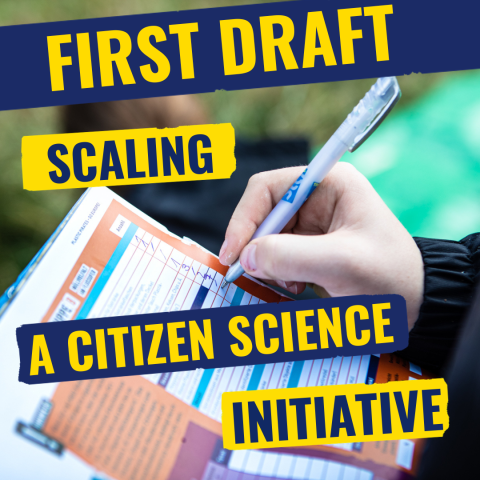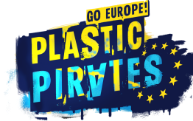
The Plastic Pirates – Go Europe! is a pilot initiative that is set out to show how a citizen science project, and especially the Europeanization thereof, can contribute to excellent science and citizen engagement. The Plastic Pirates approach for scaling the project has been analysed to prepare best practice recommendations for other Citizen Science projects.
The analysis builds on the 2023 Mutual Learning Exercise on Citizen Science as part of the EU Commission Directorate General for Research and Innovation. Researchers from across Europe have, amongst other, analysed scaling of Citizen Science projects. The researchers have identified 3 types of Scaling: Scaling up, scaling out and scaling deep. In the analysis, the Plastic Pirates show for each scaling their approach and method, key success factors and challenges. From this analysis, we have derived a first draft summary for best practices in the following:
Table: MLE CSI-PP Responsible and Inclusive Scalability Framework for Citizen Science (MLE, Adapted from Moore, Riddell, Vocisano 2015)
Scale Up - International Coordination
Preparing and placing Plastic Pirates – Go Europe! in the political context
- Embed Citizen Science initiative in political agenda by engaging relevant stakeholders from the start. Frame this engagement in a formal context such an interest group or stakeholder roundtable to draw attention to the initiative.
- Keep close contact with stakeholders on policy base and engage on the next steps of the project.
- In order to establish a link to the policy agenda, Citizen Science initiatives needs to be anchored on national level with ownership of national representatives to ensure national implementation.
- Ownership is enhanced when the Citizen Science project is developed in co- creation with political / national policymaker/ stakeholders.
Establishing harmonized pilot implementation across Europe
- When upscaling a Citizen Science initiative, engage local implementation teams through one, unified call amongst all countries with matching funds from ministries to enhance sustainability and commitment.
- Establish cascading funding as means of distributing funds to suitable local partners.
- When upscaling a citizen science initiative in a new country, set a lifetime of at least 3 years in order to engage implementing partners to contribute to the initiatives and participants for lasting commitment.
- Communicate from the outset of the Europeanisation/Implementation process that follow-up funding is needed so that the initiative can be made sustainable and continue beyond the pilot phase.
- Especially in piloting a new citizen science initiative, follow an incremental approach, testing a mode of implementation and leave room for further development and improvement. E.g. Extend the action to countries successively to learn from the experience of each engagement.
PPEU internal coordination for harmonized implementation and further development of the initiative
- Set- up one web-based platform to make all important information available to implementing partners simultaneously. Platform ideally has functions, to share contacts, chat, joint calendar, joint groups and channels to work on documents.
- Identify a preferred way of communication. This may differ according to culture and personal preferences.
- Engage local implementation teams to establish a joint community. This enables to keep the approach harmonized and exchange on best practices which in turn enables the further improvement of the protocol.
- Enshrine the further development of the protocol and support the community in the work of the local implementing teams. Longer implementation times supports this cause.
- The Citizen Science protocol should be a living document in which local implementation teams are the experts. Continuously ask for feedback on the document from the practitioners. When updating the protocol, ask feedback from the community in a given time frame. If no feedback is given in the given timeframe, the update should be considered as accepted. Smaller changes may be made throughout the initiative implementation. More complex changes shall be collected and revised in a more encompassing way.
External Communication and Stakeholder outreach
- Establish a network of stakeholders in a centralized contact list including ways of engagement.
- Set- up a corporate design that reflects the Citizen Science initiative and your objectives.
- Implement a communication strategy including social media, media and events as well as newsletters, policy briefs and policy recommendation.
- Create centralized, key messages that are specific and yet relatable internationally.
- Set- up a central website, keep is clean and easy to navigate. Either enable that local implementation teams can individually alter content in their respective languages or encourage national websites with link to the central website.
- Participate in relevant events and keep the CD initiative in the spotlight to keep stakeholders interested and this solidify sustainable implementation.
Sustainability of the action
- Citizen Science project need time for meaningful impact. Plan for at least implementation time of 5 years to be able to sustainably implement the initiative, further develop the approach and embed it in social and political structures.
- Centrally coordinated, external communication is essential to stay relevant and to gather public support
- Link to Scientific relevance needs to be clear.
Scale Out – International implementation
Participants are closer to science and enhance ocean literacy
- Plan for impact assessment including societal impact from the start.
- Be aware of the audience you would like to reach. Regarding resource allocation, high quantity of participants is often in contrast with targeting marginalized, not interested groups. Reflect on the objective you would like to achieve and analyse which stakeholders need to be directly involved.
- Co- create action material jointly with key stakeholders and participants
- Citizen Science material is a living document, further developing with the experiences that the participants. Hence, design action material as simple as possible, try to include many pictures and if feasible only distribute it digitally, to make later adjustments easier.
- Give quick feedback and recognition to participants for their input to increase the impact.
Scientists appreciate citizen science and citizen science data that contribute to excellence science
- In order to expect impact on the scientific community, the citizen science protocol needs to include certain scientific rigour. This is achieved by including scientists in the verification of data as well as clear guidelines for the analysis of data in order to produce comparable data.
- When planning your Citizen Science project, review which data you want to collect and which level of detail you will need. Adjust the protocol so that data is detailed enough to be relevant without being overly complex.
- Scientists need to verify the data to be accepted by the scientific community. In order to facilitate this often time-consuming task include Apps and AI where possible to automatize/ facilitate the verification process
- Include a review of the protocol with allocated resources in order to be able to learn from best practices.
- Large part of citizen science appeal to the scientific community is the large number of data sets (filling in the blanks between scientific institutions). Hence, scientists need to fight for every data set.
- To increase the interest of local scientists, keep the protocol open for small amendments and add- ons in order to complement research in the respective area.
- To reach the scientific community, identify international directives/ guidelines/ categorization for your samplings.
- Develop an agreed upon, open source template/ script to use for data consolidation.
- Identify international database to upload data that is well regarded and used in the international community.
- Within the set-up of the Citizen Science project, create an enabling environment for scientific publication including funding opportunities.
- Portray data as complementing the work of scientific institutes Citizen science data to fill in the gaps between scientific institutes to create a more complete picture.
- Make funds available to researchers to prepare scientific results to give quicker feedback to participants, make active contribution to excellent science and contribute to policy monitoring.
Policy makers consider and include science and citizen science data and results in policy making
- In the internationalization of an Citizen Science initiative, institute a strong link to priority policies on EU and/ or International level.
- For each participating country identify the national policy and institute that is responsible for the set policy. Contribute data also to the respective institute e.g. national statistics office.
- Present data on local, national and international level.
